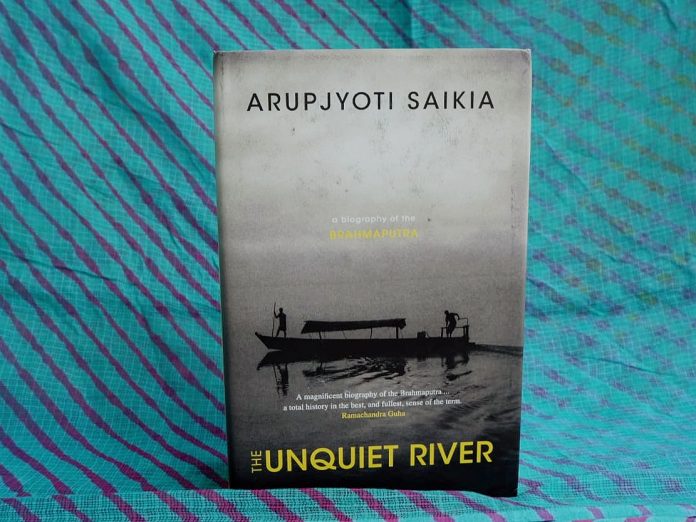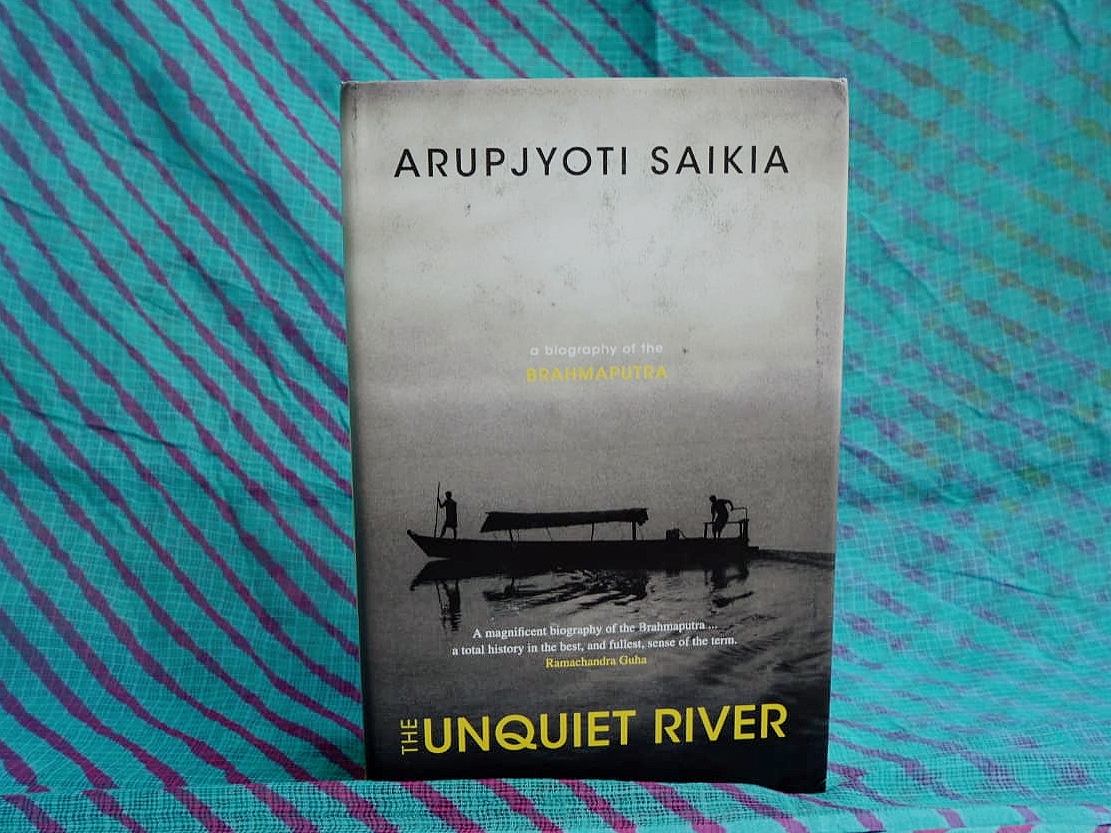The Unquiet River: A Biography of the Brahmaputra
by Arupjyoti Saikia
Publisher: Oxford University Press (2019)
I was horrible at Geography in school. “Mark the Western Ghats on the map (4 marks)” – the question seemed to yell at me from the paper and I distinctly remember shading a thin, uncertain bit on the right side of the Indian map. So it is a little surprising to me that I wanted to read this book. But the title seemed to call out to me, you know? “The Unquiet River: A Biography of the Brahmaputra”, a fitting adjective I thought in retrospect after reading one of the few biographies of the Brahmaputra.
“How does one begin to tell the story of the Brahmaputra?”, Arupjyoti Saikia begins, his first chapter stirring up a most intriguing question in anyone’s minds when they contemplate the beginnings of a natural phenomenon. While the answer cannot be summed up in a line or even a para, a conversation can be started by saying that they are formed by the confluence of the Dihang, the Dibang and the Lohit at Kobo, three large rivers originating in the mountains. The discussion would then probably take a turn out of Assam, into Bangladesh, now under the name Jamuna where it meets the Ganga, joined by the Meghna, ultimately spilling into the expanse that is the Bay of Bengal.
The story of the Brahmaputra that begins there smoothly morphs into a study of history and politics, where Arupjyoti tells us about the attempts at conquering the wild, fickle yet nourishing river by farmers and kings (mankind in general) and nature alike – be it by way of irrigation or by earthquakes. Sometimes the river has yielded, we learn and sometimes, it has stayed resolute.
Whatever my distaste towards the subject of Geography were in school seems to have been washed away (no pun intended) because I quite found myself being enthralled by the journey of the Brahmaputra – its numerous tributaries, its central relationship with Assam, how people embraced the various stages of the river either as an acquaintance that you had to greet merely by virtue of their permanent presence or as an invaluable resource for agriculture and hydroelectricity (eventually).
The book itself is divided into 4 main parts. My interpretation of these divisions has come to be as follows –
(a) The river’s origin, its behavior, the history and eventual formation and its influences and influencers – tributaries, islands formed, etc. (I loved learning about Majuli. Nice little piece of trivia there.)
(b) The river’s relationship with humans – how residents of the surrounding areas adapted by inventing ways to navigate the river by boats, begin irrigation for sustenance etc.
(c) The river’s relationship with nature (i.e flora and fauna), its effects on agriculture – the growing of tea and jute, and the effect of nature on it , by way of earthquakes.
(d) The river in today’s timeline – its existence intermingling with mankind’s attempts at reining the raging river in – by way of engineering, regulations and policies and in general mankind’s arrogance in assuming we have some modicum of control over the world we live in. This final section, quite in contrast to mankind’s attempts is a sober reminder that nature will do what nature will do because the Brahmaputra has been a subject of many, many floods historically.
That said, the split across these sections isn’t abrupt and the flow of topics across is smooth and engaging – almost conversational. This is a useful trait for a book to employ, especially when rich in content. The book offers a lot of references to excerpts from other historians and sources preceding it, which can serve for plentiful research material.
While the book does serve as a biography of the Brahmaputra, it does not pander to it. Arupjyoti in its abundant praise for the river does not shrink away from calling it, at least sectionally, “The Nation’s Burden” acknowledging the political discussions and measures taken around the times that it flooded causing great distress and destruction to mankind and livestock in the affected land-masses. Indeed, Arup concludes meekly – “..the Brahmaputra continues to elude the engineers and has made very clear its unwillingness to be tamed.”. We cannot live at odds with nature. Only alongside it. If it will have us.
I do not know if The Unquiet River is exhaustive in its 500-ish page description. I don’t know if this is all there is to know about the force that is the Brahmaputra. But I do know that this book got me thinking about it and all the water bodies in this beautiful, chaotic world of ours. It made me a little more curious about how rivers closer home (Bangalore) might have originated and I’ve begun reading about them, among other elements.
After I read the book, it made me remember a time, more than 15 years ago, when I didn’t know where the Western Ghats were and I chuckled to myself.
I still have to look that up.
Only, this time, I really want to.






RELATED ARTICLESMORE FROM AUTHOR
Last Among Equals: Power, Caste & Politics in Bihar’s Villages
The Living Mountain: A Fable For Our Times
Desperately Seeking Shah Rukh: India’s Lonely Young Women and the Search for Intimacy and Independence